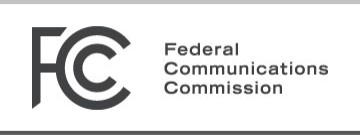
The Federal Communications Commission or FCC is the agency responsible for regulating the telecoms industry in the USA. The FCC describes its mission as
The Federal Communications Commission regulates interstate and international communications by radio, television, wire, satellite and cable in all 50 states, the District of Columbia and U.S. territories. An independent U.S. government agency overseen by Congress, the commission is the United States’ primary authority for communications law, regulation and technological innovation. In its work facing economic opportunities and challenges associated with rapidly evolving advances in global communications, the agency capitalizes on its competencies in:
- Promoting competition, innovation and investment in broadband services and facilities
- Supporting the nation’s economy by ensuring an appropriate competitive framework for the unfolding of the communications revolution
- Encouraging the highest and best use of spectrum domestically and internationally
- Revising media regulations so that new technologies flourish alongside diversity and localism
- Providing leadership in strengthening the defense of the nation’s communications infrastructure
Of particular note is the first bullet point which relates directly to the event driven investment strategy of merger arbitrage. Mergers and acquisitions which fall within the scope of the FCC‘s remit are subject to an additional layer of regulatory scrutiny thus further complication the deal closing probability (DCP) analysis. This situation is akin to takeovers that that require clearance by FERC.
The FCC in Action
The Federal Communications Commission provides extensive guidance on how it analyses mergers and acquisitions in the communications industry. Of particular note is the line
The Commission has also developed an informal timeline to ensure that most applications are processed within 180 days after the Commission has sought comment from the public.
The steps involved in this timeline are
- Filing of Application
- Initial Public Notice
- Major Transactions
- Contents of Application
- Public Comment
- Information Requests and Treatment of Confidential Information
- “Ex Parte” Rules
This timeline feature helps traders reconcile this regulatory clearance process with their own forecast completion date or any outside date (drop-dead date) as given by the firm. This can help immensely with an annualized return calculation when comparing different deals.
There is also an extensive archive feature of significant deals from which traders can perform their own research.
